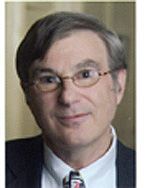Hats in the Ring: Choosing Britain’s Chief Rabbis from Adler to Sacks by Meir Persoff, Academic Studies Press, Boston; ISBN 978-1-61811-269-9 ©2013, $24.95, p. 337, including index
By Fred Reiss, Ed.D.

WINCHESTER, California — The position of a chief rabbi, which originally had such titles as Resh Galuta, Exilarch, and Gaon, has a long history. From the defeat of the Jews at the hands of Nebuchadnezzar and the Babylonians in 586 BCE through the 10th century, the Exilarch, originally a descendent of the House of David, served as judge, scholar, and supreme religious authority for his community. The Exilarch often served as the intermediary between the Jews, who were treated as a separate corporate body, and the civil government.
Jews from northern France and the Rhine Valley first appeared in England in the 11th century. Many came with William the Conqueror, settled down, and formed middle class communities. By the 12th century, anti-monarchy hostilities routinely spilled over into the Jewish communities, which continued to experience periods of tranquility and turbulence until the final act of expulsion on July 18, 1290 by Edward I. Up until the time of the expulsion, there existed a position known as the Presbyter Judaeorum, the chief official of the Jews of England whose primary purpose was to collected taxes from the Jews on behalf of the crown, although kings often called on the Presbyter Judaeorum for advice about the Jewish community.
England remained officially free of Jews until 1656 when England’s “Lord Protector,” Oliver Cromwell, agreed to allow Jews to return. In 1690, the Jews erected London’s first synagogue, the Great Synagogue of London, and by 1845 a total of four permanent synagogues had been constructed. However, not until the 19th century did the Jews receive full emancipation.
Pursuant to a law established by Parliament, entitled the Jewish United Synagogues Act in 1870, London’s Jews created an organization called the United Synagogue (not to be confused with the United Synagogue of Conservative Judaism) establishing a community-wide Bet Din (Jewish court) with its own dayanim (judges), and a chief rabbi.
Meir Persoff, author, journalist, and a former editor with the London Jewish Chronicle, opens his absorbing book Hats in the Ring with the nefarious act of Rabbi Solomon Hirschell, who held the title of Chief Rabbi of the Great Synagogue, in which he coordinated an effort with the secretaries of the other synagogues to excommunicate a group of Jews, known as secessionists, from London’s West Side in 1842, because they introduced Reform Judaism into England. From here, Persoff takes us through the political machinations, both behind the scenes and in the public eye, for the coveted title of Chief Rabbi of Great Britain beginning with Hirschell’s successor, Rabbi Nathan Marcus Adler, through the election of Rabbi Jonathan Sacks in 1991.
Hats in the Ring is not a compendium of deeds and accomplishments of Great Britain’s Chief Rabbis, but rather a history of the inter-communal fighting, discord, and dissensions leading up to the appointment of a chief rabbi. Therefore, in addition to watching the “power plays,” we come to understand many of the endemic problems and issues facing Britain’s Jews from the mid-nineteenth through the mid-twentieth centuries. Persoff also includes the inaugural speech of each new Chief Rabbi, giving the reader an opportunity to see the issues of importance and future plans through the eyes of the victor.
To the world, and perhaps even England’s monarchy, Britain’s Chief Rabbi speaks on behalf of Britain’s Jews, but what becomes obvious throughout the one hundred and fifty year history covered in this book is that within the Jewish community the title Chief Rabbi really means Chief Rabbi of the Ashkenazic Orthodox Jews. The Sephardim have a leader of their own, known as Hakham (a Hebrew word meaning “the wise one,” and is used as a title of respect). The leadership of Conservative and Reform Jews, if any, has no official title. Also apparent is the desire of United Synagogue to marginalize non-Orthodox Jews, particularly in the selection and appointment process for a Chief Rabbi.
It often takes a year or more from the death or resignation of the Chief Rabbi to the appointment of a new one, giving powerful elites an opportunity to push their candidate forward. Although none of the rabbis whose names are whispered as potential contenders publicly declares that he is a contestant, we see that many travel to England, some even bring their wives and family with them, to speak at synagogues, deliver lectures, and make themselves available to meet people likely to be on the selection committee, or have some influence with them.
Drawing on a vast number of correspondence and other primary materials, Hats in the Ring shows us how the nature of the position and personal qualifications of Chief Rabbi changed with the times as a result of: the continual feuding between Orthodox Jewry and Judaism’s more modern sects, including the Conservative Movement’s Masorti and unprecedented international situations, such as the Holocaust and the birth of the modern State of Israel. Persoff does an outstanding job redacting a vast amount of information and blending it into a clear and comprehensive study of the Anglo-Jewish community as it searches for and selects religious leadership at the highest level.
*
Dr. Fred Reiss is a retired public and Hebrew school teacher and administrator. He is the author of The Standard Guide to the Jewish and Civil Calendars; Ancient Secrets of Creation: Sepher Yetzira, the Book that Started Kabbalah, Revealed; and a fiction book, Reclaiming the Messiah. The author can be reached via fred.reiss@sdjewishworld.com.
According to Abbott and Will Durant >Jews were held in captivity in England 1252-1255.
http://books.google.com/books?id=_VcvAAAAYAAJ&dq=israel%20in%20europe%20abbott&pg=PP1#v=onepage&q=israel%20in%20europe%20abbott&f=false